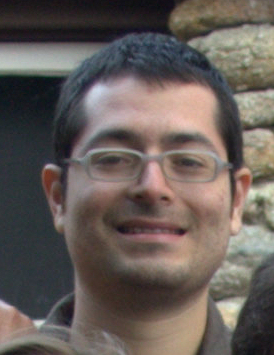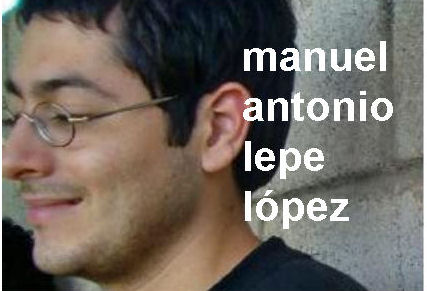- Home
- :
- All Communities
- :
- User Groups
- :
- Conservation GIS
- :
- Documents
- :
- Manuel Antonio Lepe López, Guatemala
- Subscribe to RSS Feed
- Mark as New
- Mark as Read
- Bookmark
- Subscribe
- Printer Friendly Page
- Report Inappropriate Content
Manuel Antonio Lepe López, Guatemala
Manuel Antonio Lepe López, Guatemala
Manuel Lepe, Wildlife Conservation Society, Programa para Guatemala, Guatemala
Researchgate Profile Manuels' Blogspot Site

2012 Scholar Profile:
In 2009 I received my degree in veterinary medicine. I spent about two years working in clinic for small species and a few months working with a hydroelectric company studying bats in tunnels, in Juayúa, El Salvador. I started my work in conservation in November 2011 when I started working on livestock-jaguar conflicts with WCS. We developed a project to promote the conservation of the jaguar among farmers, to teach techniques of livestock conflict mitigation, and to study the perception of the conservation of the jaguar at different levels of the population.
Currently as WCS Guatemala program we are developing research in conservation of jaguars, scarlet macaws, and Central America river turtle, all in the Maya Biosphere Reserve.
For the conservation of the jaguars (Panthera onca), the Maya Biosphere Reserve is (MBR) Mesoamerica’s largest protected area, and has been internationally recognized as both a “Hotspot” for biodiversity, and as a “Last Wild Place”, and forms part of Mesoamerica’s largest Jaguar Conservation Unit (JCU). There are three main threats to jaguar across the MBR: (1) hunting for bush meat, (2) destruction of habitat due to fire, and (3) direct retaliatory jaguar killing driven by human – jaguar conflicts (e.g. jaguar attacks on livestock, and the associated poor public perception for jaguars). The conservation of the jaguar is being developed through three objectives: (1) reduce negative perceptions about jaguar amongst ranchers, the communities in which they live, and other stakeholders, (2) increase the adoption of human-jaguar conflict management techniques by ranchers, and (3) improve communication on human-jaguar conflicts and jaguar conservation between ranchers and their communities, governmental authorities, and other stakeholders in the Maya Biosphere Reserves buffer zone.
For the conservation of the Central American (CA) River Turtle (Dermatemys mawii), our main objective is to increase the D. mawii population in El Perú Lagoon by obtaining their eggs before the female hatch (using oxytocin), incubating these eggs and releasing them in the lagoon after they hatch. This intervention will improve the turtle’s reproductive success through the decreasing of egg mortality due to natural predation. Eggs are only predated by animals; humans do not consume the eggs of this turtle, they consume the turtles’ meat. Additionally, this intervention will be linked to an education campaign to raise awareness about the importance of D. mawii conservation in villages close to the nesting site; and protection activities focused on deter people from capturing turtles.
For the conservation of the scarlet macaw (Ara macao cyanoptera) we work in the following activities: (1) strengthening links between macaw conservation and local communities, (2) maintain field presence in scarlet macaw nesting areas to deter poaching and habitat conversion, (3) increase the availability and use of macaw nesting cavities, (4) continue refining the video monitoring technology originally developed with the support of the BBCWF, test “soft releases” of juvenile scarlet macaws raised in captivity. (Photo: Manuel Lepe, courtesy of Manuel Lepe Blogspot Site)

Please describe how you work in your local conservation and GIS community: In the conservation of the jaguar, the organization I work for, tries to combine outreach and capacity building programs to improve communication between ranchers and authorities, using multiple tools ranging from education to hands-on demonstration projects. Activities include: (1) collecting baseline data on the current state of knowledge of jaguar ecology, human-jaguar conflict mitigating techniques and attitudes, a behaviors towards jaguar conservation; (2) designing and implementing an outreach program; and (3) training in management techniques that decrease the incidence of conflicts between jaguars and hoof stock. Beneficiaries of these activities are the rancher communities in the southeastern section of the Maya Biosphere Reserve Buffer Zone. Additional beneficiaries are field personnel of the Living with Carnivores Consortium (LCC), The Guatemala Protected Areas National Council (CONAP), the Ministry of Food, Agriculture and Cattle Ranching (MAGA), the Ministry of Environment and Natural Resources (MARN), and local Guatemalan NGOs, ARCAS, Defensores de la Naturaleza, Asociacion Balam, and WCS.
Expected benefits with the activities we do now, outputs and outcomes include: a long-term education and outreach strategy for building a jaguar conservation constituency in the eastern MBR buffer Zone, at least 50% of the primary target audience trained in basic jaguar ecology, conservation issues, and domestic animal management for co-existence; at least 50% of local school teachers trained with the WCS Jaguars Forever environmental education curriculum, at least 3 pilot projects implemented as working examples for conflict reduction in conflict “hot zones”, at least 50% for the primary target audience viewing conservationist as a partner; and the consolidation of the recently initiated “Living with Carnivores Consortium” as a participatory consulting group for the human-jaguar conflict mitigation in the Buffer Zone of the MBR.
Our organization constantly receives event reports of predation on cattle farms, either by farmers or by local authorities. We plan visits to the farms where we verify the possibility of attacks by carnivores, and study the ways the bodies were attacked to better understand the identity of the predator. We also study the tracks of predators and place camera to better identify the predator as a jaguar, puma or other carnivore. We encourage farmers in techniques of farm management to try and reduce the chances of attacks. For example, night holds for livestock, monitoring of pastures, avoiding extensiveness use of its production, good management practices and veterinary access. We use the global positioning system for a database of points of predation within and outside the Maya Biosphere Reserve. We relate GPS points of predation to events with patches of forest outside the reserve.
Please describe what is the most unique and the most challenging about the conservation/GIS work that you do:
The most exciting part of my job is fighting to preserve the jaguar in an archaeological area as large as the Maya Biosphere Reserve; this area includes the ruins of Tikal, Yaxha-Nakum-Naranjo, Laguna del Tigre, and El Mirador, among many other. I love to travel within the reserve and know that is home to unique animals such as the turtle America Center (Dermatemys mawii), scarlet macaws (Ara maca cyanoptera), and howler monkeys (allouatta pigra).
The biggest challenge is to help the perception that farmers have for the jaguar. The farmers focus is often on production. This mentality is often links higher production with more land in agricultural production. Therefore one of the hardest parts is to help the owners of the farms see other options, which will not only benefit them, but be environmentally friendly as well.
The National Council of Protected Areas (CONAP) donates time to WCS to help with the design of maps, however, it would be a huge advantage for us to have someone within our organization who was capable of designing internally. The biggest challenge right now, is not having the training to make our own GIS projects.
2012 Scholar Conference Presentation:
“Human activities that threaten the conservation of the jaguar in the Buffer Zone of the Maya Biosphere Reserve, Petén.”
The Maya Biosphere Reserve in Petén, Guatemala, has a buffer zone in order to prevent human activities which are conducted within the reserve forest fragmentation handling Maya. During the last 20 years, the function of the buffer zone has become more important due to the increase in the number of farms devoted to livestock and agriculture in the Petén. This has been caused by the movement of the livestock industry from the south of Guatemala to the Petén which happened in the early nineties. The jaguar (Panthera onca) is a species that is at the top of the food chain in natural species of the Maya Biosphere Reserve (umbrella species) and requires large amounts of territory to obtain resources for survival. In recent years the decline of natural prey of the jaguar and the deforestation from forest fires have made it necessary for the jaguar to leave the reservation in order to get their food from cattle farms in the buffer zone. Currently the conflict between livestock and the jaguar in the buffer zone of the Maya Biosphere Reserve is the main threat to the survival of the jaguar. The objective of this presentation is to design a map showing the areas of greatest threat as human activities in relation to the conservation of the jaguar. Data was collected in regards to predation events on cattle farms, and to know the geographic locations of livestock production would serve as the basis for landscape design for the survival of endangered jaguar.
x2012Scholar x2012Talk xScholar xTalk xWCS xWildlife xGuatemala xLatinAmerica xLatinx xWildlife xReserve xSpecies xProtectedArea xCat xMammal xHabitat xConflict xBird xReptile xCommunity xForest